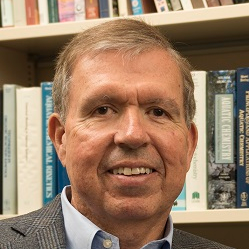Phosphorous in Soils and Sediments
A special issue of Minerals (ISSN 2075-163X). This special issue belongs to the section "Environmental Mineralogy and Biogeochemistry".
Deadline for manuscript submissions: closed (3 September 2021) | Viewed by 18627
Special Issue Editors
Interests: applications of synchrotron X-ray fluorescence microscopy and microspectroscopy, especially of lighter elements Si, P, S, and Ca, in Earth, planetary and environmental sciences
Special Issue Information
Phosphorous is an essential nutrient for all life on Earth, and in many systems is the limiting nutrient. However, its bioavailability is highly dependent on its chemical speciation. On the other hand, release of P can result in the significant degradation of ground and surface waters. Forms of P range from relatively inert crystalline mineral species, through amorphous and nanocrystalline phases, various organic P-bearing materials, strongly adsorbed P species, to weakly adsorbed and highly soluble species. Understanding this chemistry is an ongoing effort. Effective management of P for sustainable and productive but environmentally responsible agriculture has long been a priority scientific goal. What makes this research challenging is the extreme heterogeneity of soils and sediments. These contain an array of inorganic and organic components, including primary and secondary minerals, the latter of which includes clay minerals and metal oxides, and natural organic matter. There are also the local effects of microbes, fungi, plant roots, and other biota. Soil and sediment microenvironments can differ significantly from bulk conditions; understanding the roles and relative contributions of these microenvironments in P chemistry can better explain larger scale processes.
In addition, soil and sediment chemistry is not static: many chemical and redox processes are transient, seasonal, and respond to fluctuations in moisture content and fluid flow. Agriculture manipulates the physical structure of soil, and changes its composition through the application of fertilizers, mineral and organic amendments, pesticides and herbicides. In the long term, sustained agriculture depletes some components and builds an excess pool of others. Changes in land use may then have unexpected consequences. In many areas of the world, inundation due to rising sea level will have a significant impact on P reservoirs in coastal sediments, soils and former agricultural lands. This Special Issue invites papers on all aspects of P in soils and sediments, but especially those addressing its heterogeneity and response to change. Examples include, but are not limited to, the following.
- Application of traditional and novel tools to characterize distribution, speciation, chemistry, bioavailability and leachability of P
- Heterogeneity—spatial, chemical, biological, and temporal—of P in soils and sediments
- Heterogeneity of chemical processes in soil and sediment microenvironments that govern P behavior
- Cycling and fate of P on the micro to global scales
- Effect of rising sea level on P reservoirs in coastal soils and sediments.
Dr. Paul Northrup
Prof. Dr. Donald Sparks
Guest Editors
Manuscript Submission Information
Manuscripts should be submitted online at www.mdpi.com by registering and logging in to this website. Once you are registered, click here to go to the submission form. Manuscripts can be submitted until the deadline. All submissions that pass pre-check are peer-reviewed. Accepted papers will be published continuously in the journal (as soon as accepted) and will be listed together on the special issue website. Research articles, review articles as well as short communications are invited. For planned papers, a title and short abstract (about 250 words) can be sent to the Editorial Office for assessment.
Submitted manuscripts should not have been published previously, nor be under consideration for publication elsewhere (except conference proceedings papers). All manuscripts are thoroughly refereed through a single-blind peer-review process. A guide for authors and other relevant information for submission of manuscripts is available on the Instructions for Authors page. Minerals is an international peer-reviewed open access monthly journal published by MDPI.
Please visit the Instructions for Authors page before submitting a manuscript. The Article Processing Charge (APC) for publication in this open access journal is 2400 CHF (Swiss Francs). Submitted papers should be well formatted and use good English. Authors may use MDPI's English editing service prior to publication or during author revisions.
Keywords
- phosphorus
- soil
- sediment
- biogeochemistry
- agriculture
Benefits of Publishing in a Special Issue
- Ease of navigation: Grouping papers by topic helps scholars navigate broad scope journals more efficiently.
- Greater discoverability: Special Issues support the reach and impact of scientific research. Articles in Special Issues are more discoverable and cited more frequently.
- Expansion of research network: Special Issues facilitate connections among authors, fostering scientific collaborations.
- External promotion: Articles in Special Issues are often promoted through the journal's social media, increasing their visibility.
- Reprint: MDPI Books provides the opportunity to republish successful Special Issues in book format, both online and in print.
Further information on MDPI's Special Issue policies can be found here.






